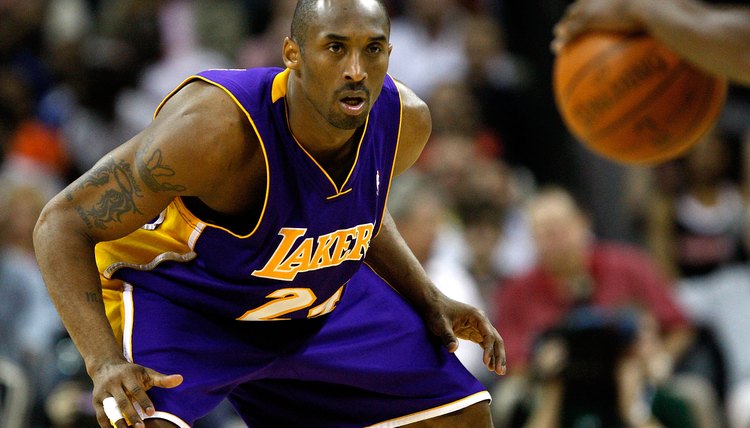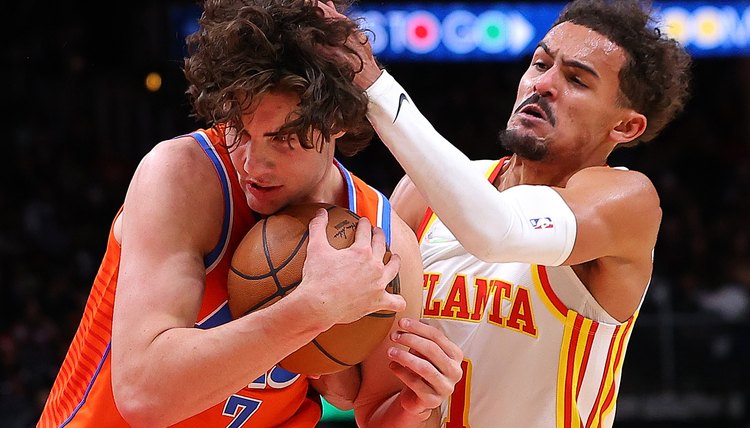Basketball Rules for Face Guarding an Opponent

Face guarding occurs when a defensive player blocks or disrupts the vision of the offensive player, whether that player has possession of the ball or not. At any level of basketball, the rule book generally calls for a face guarding violation to be called in each of the following situations:
- If a defender places their hand in front of the eyes of an opposing player in the act of shooting a jump shot rather than defending the ball
- If a defender is guarding an opposing player that does not have possession or control of the ball, blocking the offensive player’s vision to prevent him from receiving a pass from their teammate is a violation
For specific basketball rules at each level of play, continue reading.
Pro Basketball Face Guarding Rules
The NBA does not specifically outlaw face guarding, in theory, though if any contact is made while a defender is waving or placing the hand in front of the face of an opponent, whether they are the dribbler or not, this violates legal guarding position and a personal foul is called.
Contact to the head or face is typically ruled a flagrant foul, resulting in ejection and possible suspension for the offending player. NBA officials, as most fans know, are not in the habit of calling a foul when there is no contact to the face of the ball handler.
An offensive foul is called on a player when they forcefully use their body to create space to dribble, commonly seen when a player from the offensive team is attempting to bring the ball up from the backcourt to the frontcourt after a throw-in inbounds from the sideline or baseline.

College Basketball
The NCAA defines face guarding as, “Purposely obstructing an opponent's vision by waving or placing hand(s) near his or her eyes” in Rule 10, Section 6, Article 1 in the official rules, which cover both men’s and women’s basketball. The offender is penalized with a technical foul resulting in a free throw for the opposing team.
High School Basketball
The National Federation of State High School Associations first outlawed face guarding back in 1913, and it has left little room for interpretation of the rules since then. In 2004, the NFHS highlighted face guarding in its 2004 “Points of Emphasis” release for referees when the rules of basketball were modified to include actions occurring away from the ball.
The release notes that placing a hand in the air while defending a player in the post is legal and good defense, deliberately blocking the vision of the offensive player- whether they are the scorer, screener, or spot-up shooter- is not.
International Basketball
The International Basketball Federation’s rules follow closely to those of the NCAA and NFHS. Face guarding is explicitly prohibited by rule 38.3.1 which states, in part, “baiting an opponent or obstructing his vision by waving his hands near the eyes” is a technical foul against the offender resulting in a free throw opportunity for the opponent.
